The Taj Mahal, India
Hello, and thanks for joining us for an update on our adventures.
On Wednesday, Karen and I awoke in the seaport of Cochin, India. This city was previously known as Kochi, but after after World War II, India won their independence from British, and changed its name back to its indigenous pronunciation/spelling. This city was best known for thousands of years for its spices. For example, it brought cinnamon to Egypt. (Yummo!)
India had a long history of being ruled by others. Largely due to the actions of India’s cultural and political leader Mahatma Gandhi, after nearly 200 years of rule, Britain granted the country independence after WWI, but dragged their feet for 20 years before honoring their commitment.
In 2022, with 1.43 billion citizen, India overtook China as the most populous country in the world. This is a very big county, but the overcrowding is just their way of life.
So, when I decided to write a travel blog, I committed to keep things positive. But in the interest of providing context to our story, this particular page may push the boundaries of the “keeping things positive” rule a bit. I apologize in advance. So, here goes…
With the exception of short stints of farmland that we observed on a motor-coach ride between cities, the pollution in India is pretty extreme. I really had an hard time breathing here, due to the air pollution. Presumably due to the air pollution, nearly every building, car, road and other surface is covered in a dirty, gritty film.
At many places, the streets and sidewalks were flooded with trash. At one point, as we were on a bus preparing to leave an event, street vendors were breaking down their vending-carts along the roadway outside of the bus. As one vendor was cleaning his cart out, a fellow traveler jokingly began narrating play-by-play, like a sportscaster. As he called out which of the option the vendor might take with disposing of the trash from his cart, sure enough, the vendor picked up the huge bin contains all of the trash, and bigger than heck, dumped the whole thing right in the gutter, then began pushing his cart down the crowded street! Business as usual I guess…
While the commentary was humorous, no one laughed as we sadly turned our attentions elsewhere…
🙁
So I mentioned the overcrowding. But the homelessness! The number of people sleeping on the streets was unbelievable.
Contributing to the overcrowding issue is the fact that the cities are home to many migrant workers who (permanently) come into the cities from the outlying communities to work. While they send their earnings home to their families, they live on the streets (because their earnings are so low). And as I said, they rarely return home.
Additionally, there is a large population of gypsies that reside in the cities, roaming from neighborhood to neighborhood. They too are without housing, but they apparently tend to sleep in train stations, along the railways, and at other places that they are not allowed (which puts them constantly at odds with law enforcement).
In addition to the overcrowding, we were also surprised by the poverty. While 92% of the population is literate, the average income for laborers is $3-6 per day. And a business owner or skilled worker makes about $36 per day. So as it turns out, poverty and homelessness is just a way of life in India.
Microsoft has a big presence in India, and while a software engineer (for example) in the USA averages $130,000/year, in India, they make about $35/day. You are probably asking yourself, what about call center workers and the likes? When you call a US company, and their help desk in India answers, that worker makes about $27 US Dollars per day.
Okay, moving on to more fun stuff…
We were excited to start our three day excursion to the Taj Mahal, and after a city tour, we boarded a plane to the central district of New Delhi, in the larger city (which they refer to as a “union territory”) of Delhi, the country’s capital. We had a beautiful hotel, but checked out early. (Boy I wish I had another hour in the tub!) After a sunrise city tour of the part of town the contained the capital, monuments and parks, we boarded a private train to Agra, the home of the Taj Mahal.
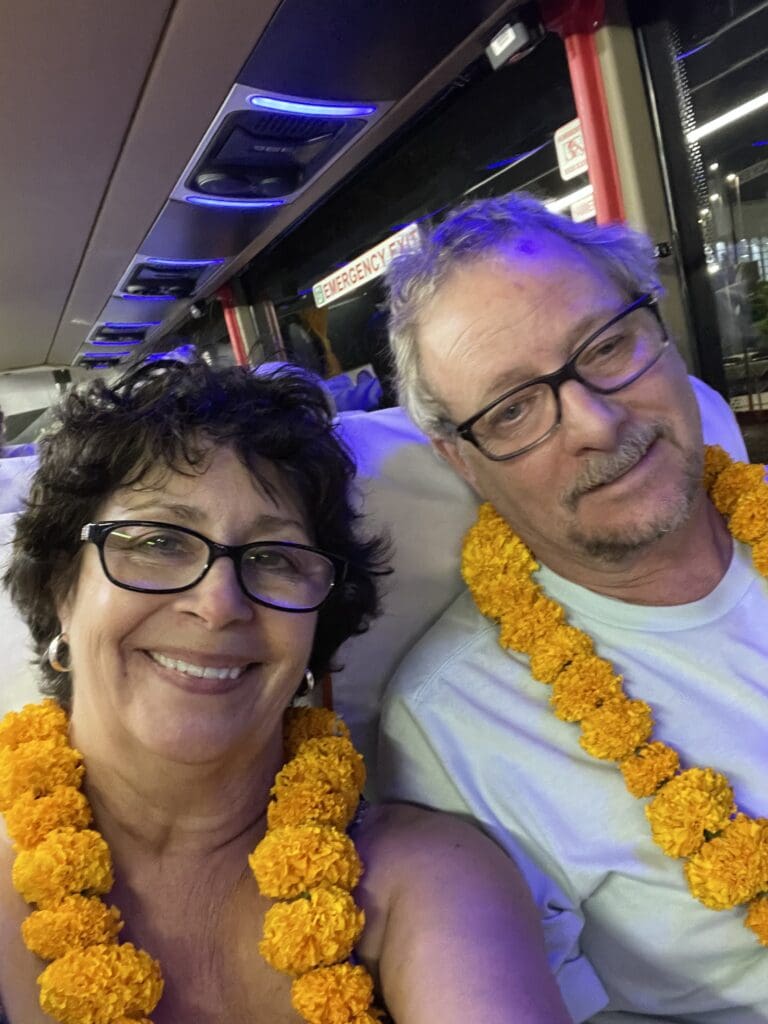
First let me say that we are very grateful for the huge effort our friends at RCCL put into arranging for this three day excursion. It can’t be easy to coordinate moving nearly 600 customers from a port city, 1,800 miles to the nearest reliable airport, finding overnight high-end accommodations, then moving them a few hundred more miles to another night of accommodations after a day of tours. Their intentions were outstanding.
So we haven’t played “The Grass is Brown on the Other Side Too” for a while, so here we go.
To give us a real taste of the country, the ship contracted a 1st class, air conditioned private train to get us the last couple hundred miles. It was to be “a three hour tour” (he sang, to the music of Gillian’s Island). One little over-site though. They didn’t contract a private track to go along with the private train. So we were behind all of the other trains that, of course, stopped at every train stop along the way. So our trip ended up taking pretty much the whole day.
Okay, moving back onto greener grass… While we had to cut out much of our Agra City Tour, we still had a fabulous sunset tour of the main attraction, the Taj Mahal. But, I’m getting ahead of myself.
So let me just say that (apparently unlike many of our fellow travelers) Karen and I thoroughly enjoyed our extended train trip. From the reclining seats of our comfy train cars, we could see the real city-scapes of India. The cities seemed to stretched on for miles and miles, and as you might have guested, they ran through the impoverished parts of the towns. I would venture to say that, in the course of the few hundred miles that we travelled we observed the housing of perhaps hundreds of thousands of destitute people. Even the stretches of farmland had overcrowding and shanty towns.
The most heatbreaking thing was all of the other trains along the way. They pile hundreds of people on these trains, which have no doors or windows. (This presumably provided the only cooling to the overpacked cars). In the early morning, many of the trains had what appeared to be metal bunkbeds with a dozen or more people sleeping on top of one another, many with arms and legs hanging out of the bars on the windows of the train-cars.
The temperatures were in the 100 degree range with such a high humidity that one’s glasses would immediately fog up if they stuck their head out of their air conditioned train-car . (Even early in the morning!)
Also of note, very few people wear shoes, and pretty much everyone is dressed in not much more than rags. In addition to the countless men, the sight of so many disheveled woman, children, and elderly folks, with their hollow eyes and their dirty little hands and feet. It made me feel just terrible for them, piled into these rail cars…
🙁
When we arrived in Agra, we were picked up by motor coach, and driven through the third city since our arrival in India, all of which had unimaginable traffic and pedestrians. Our hotel was very nice.
After a nice (really late) lunch, we headed out to The Taj Mahal, one of the new Seven Wonders of the World. This involved a motor coach ride through town to the site, where we were transferred to (many, many) golf carts, which took us several miles through the leagues of vendors, to the actual site of the monolith.
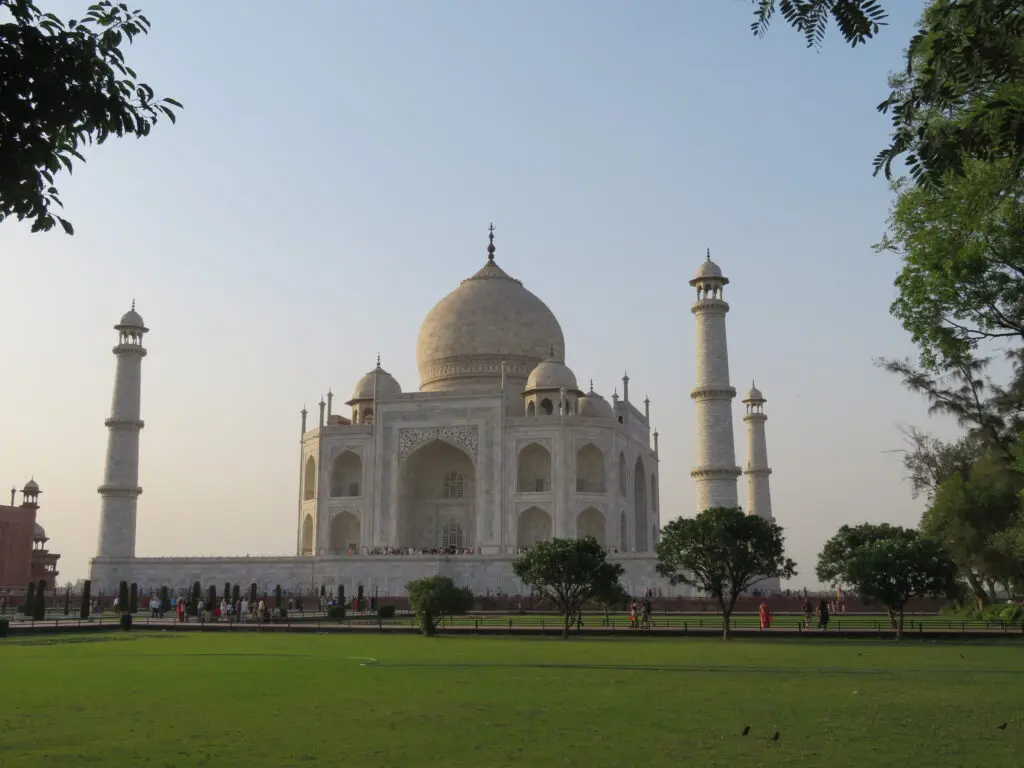
This is a huge site, with an uncountable number of visitors. As we entered the location, the actual building was visible, but still several blocks away. It was very beautiful and very exciting. After a brief summary, our guide let us explore for several hours.
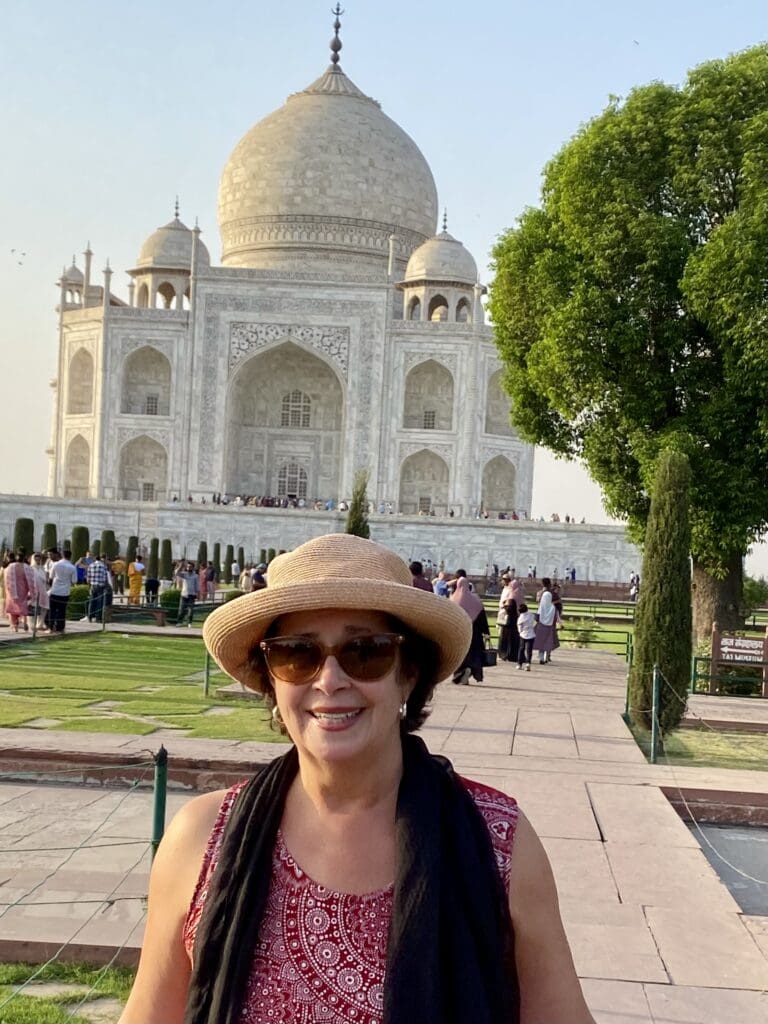
“The Taj” (as the locals call it) was constructed over a 22 year period beginning in the 1630s. Mughal Emperor Shah Jahan built the monument in memory of his third wife, a Persian princess. Upon his death, he was buried next to her. So in essence, the Taj Mahal is the tomb of this emperor and his favorite wife.
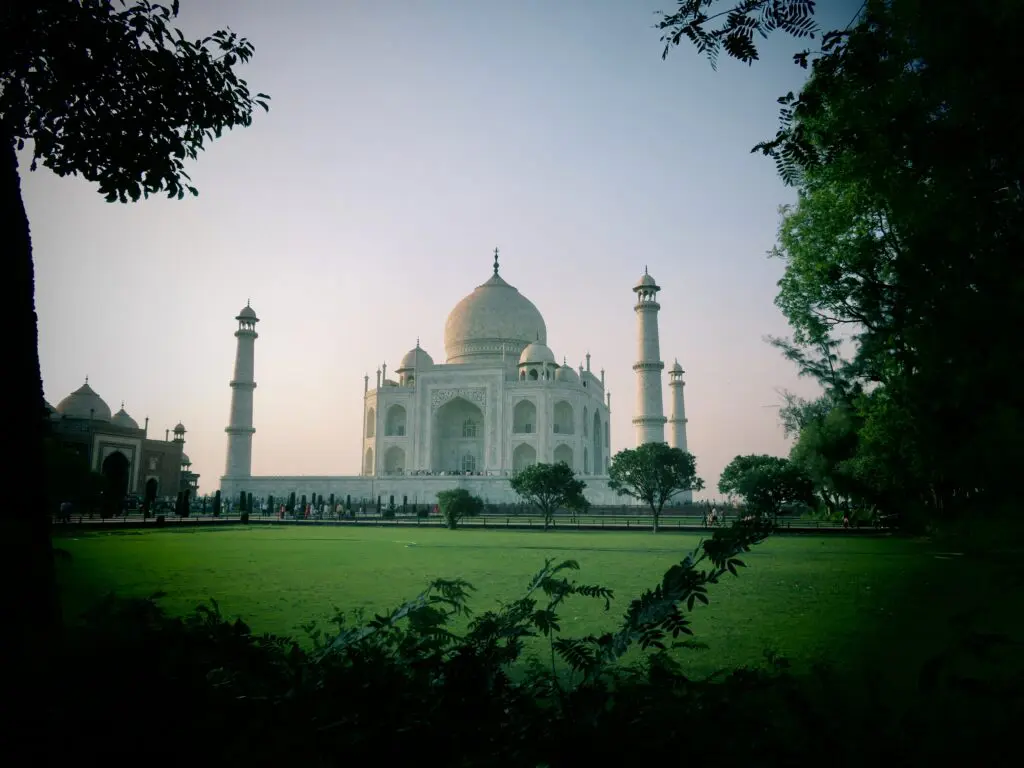
It is very beautiful, and took 20,000 artisan workers to build. It is said that, in the final stages of construction, to ensure that nothing more beautiful was built by the artisans, the emperor had the forefinger of each of the workers severed, and had them poured into the foundation of the surrounding walls. Yikes!
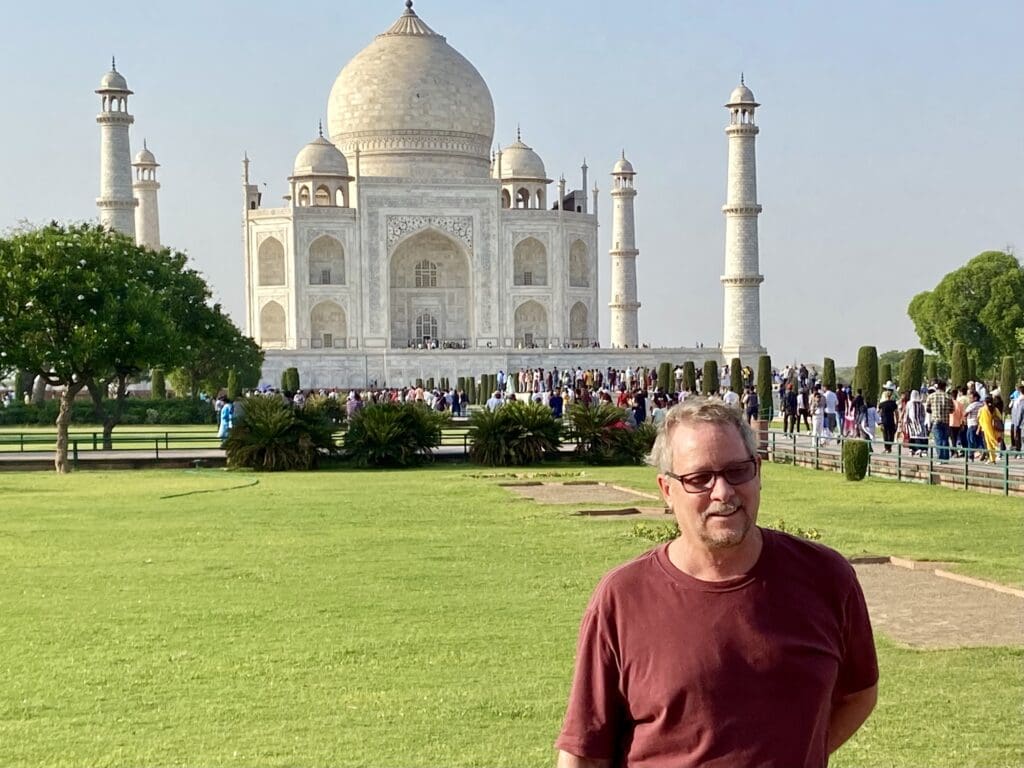
The following day we jumped on a flight, and caught back up with the ship in Mumbai, the country’s financial capital. This city of 12 million is quite something. It was formerly know as Bombay, and has many fascinating places and things to see. Luckily, we had two full days to explore.
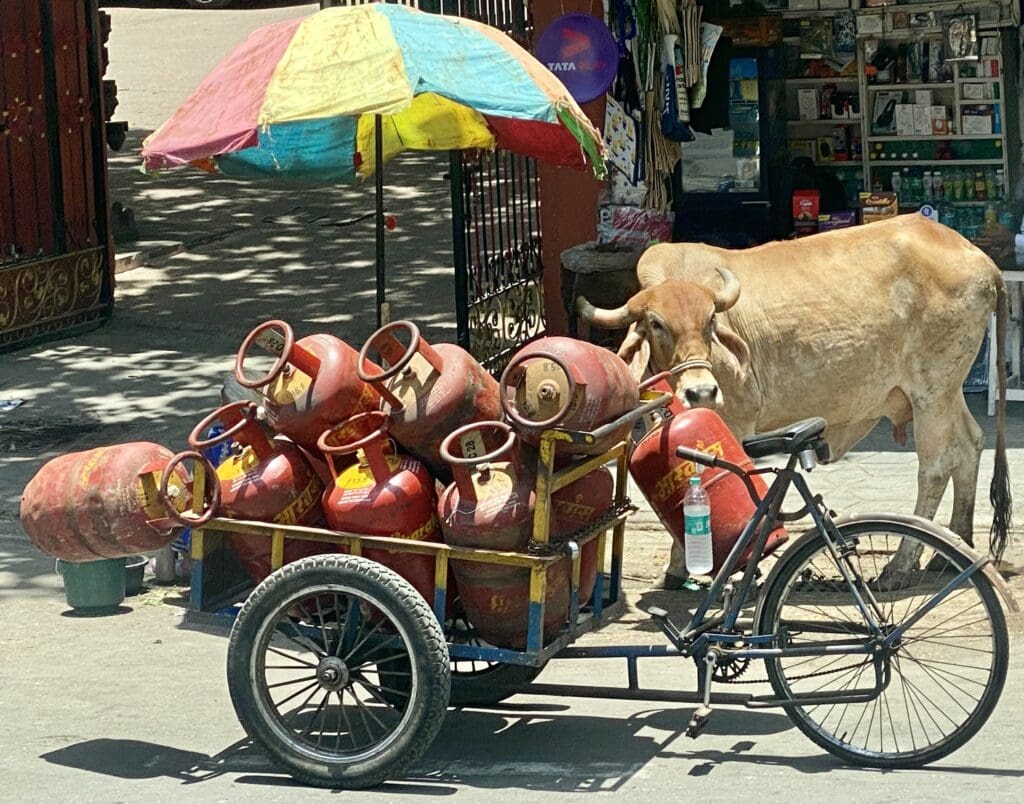
Our first excursion took us to see the dabbawalas. These fellas are something. You see, India is very traditional. In addition to all of the normal childcare and household duties, wives are expected to make every meal very elaborate. They must ensure that a full breakfast is served to their husbands and children each day. (There work-week is six days a week by the way…)
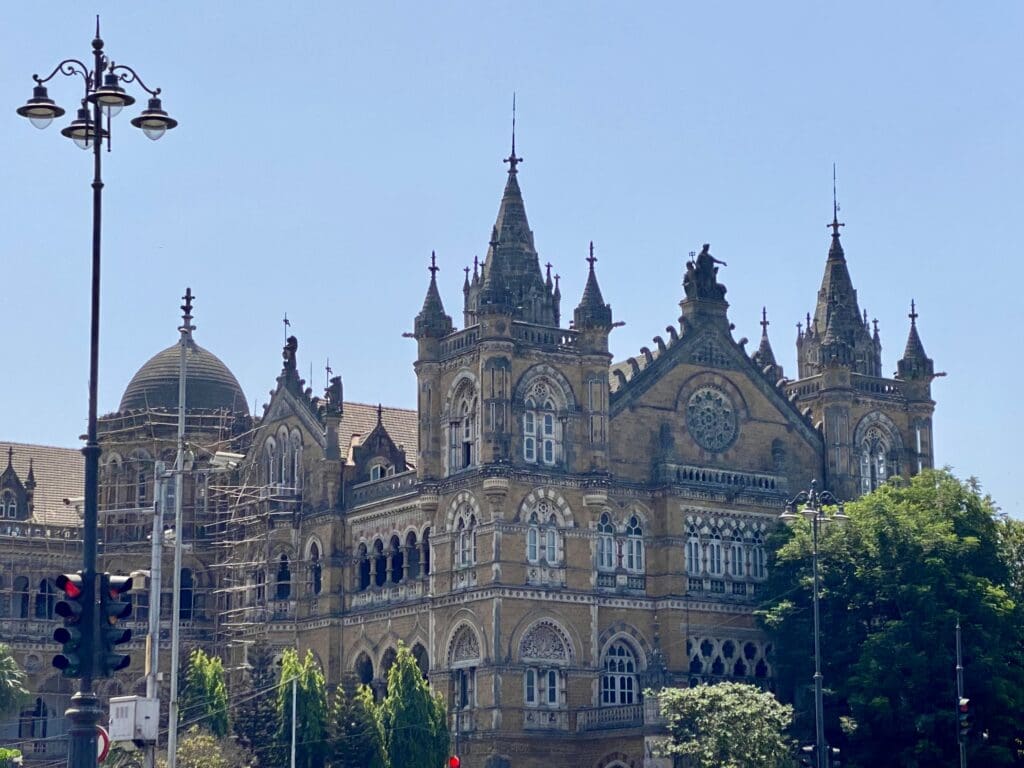
After sending the husband and children off for the day, they are also expected to make their husbands a full, fresh (several course) hot lunch. After preparing the hot lunch, it is placed in special containers, and put out just after 11 for the dabbawala, a bicycle messenger that picks up the lunches all up and down the block, and transports them to the train station. More dabbawalas meet them there, and sort and stage the lunches based on where the hubby works. (The husbands took the trains to work earlier in the day, but because they have to carry their briefcases, they, of course, can’t be expected to also carry their lunches. Duh!)
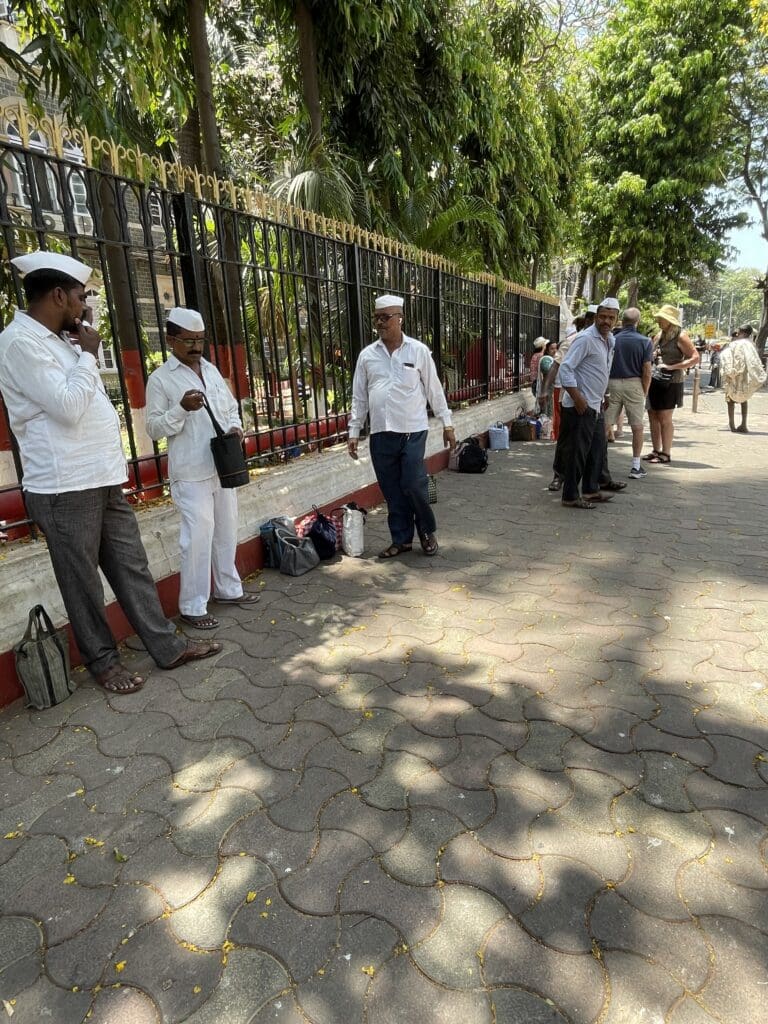
So the third group of dabbawalas pick up the sorted lunches, and carry them on the trains. After exiting, they hand them off to the forth dabbawala, who bicycles them to the buildings and carries them up to the husbands (presumably, just in time for lunch, yum!). I can’t believe we paid for a tour to see this, but it was quite the thing to witness. And the fellas were real friendly.

Next stop, train ride to the laundromat. So the train ride was pretty cool, but the laundromat, what a story!
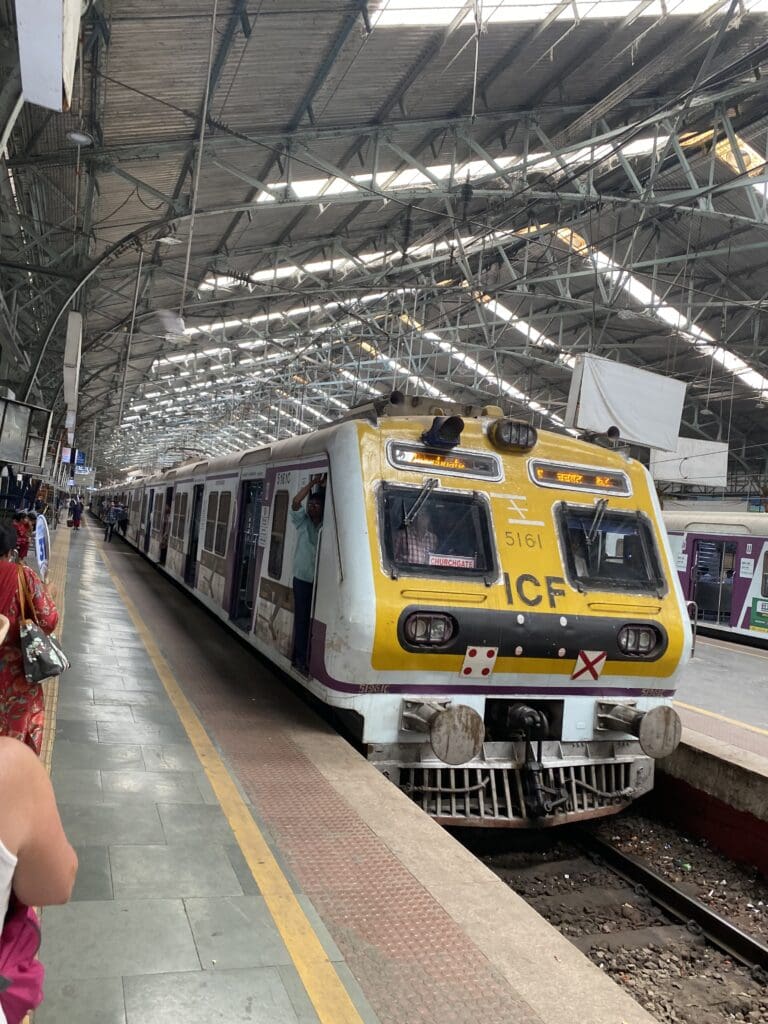
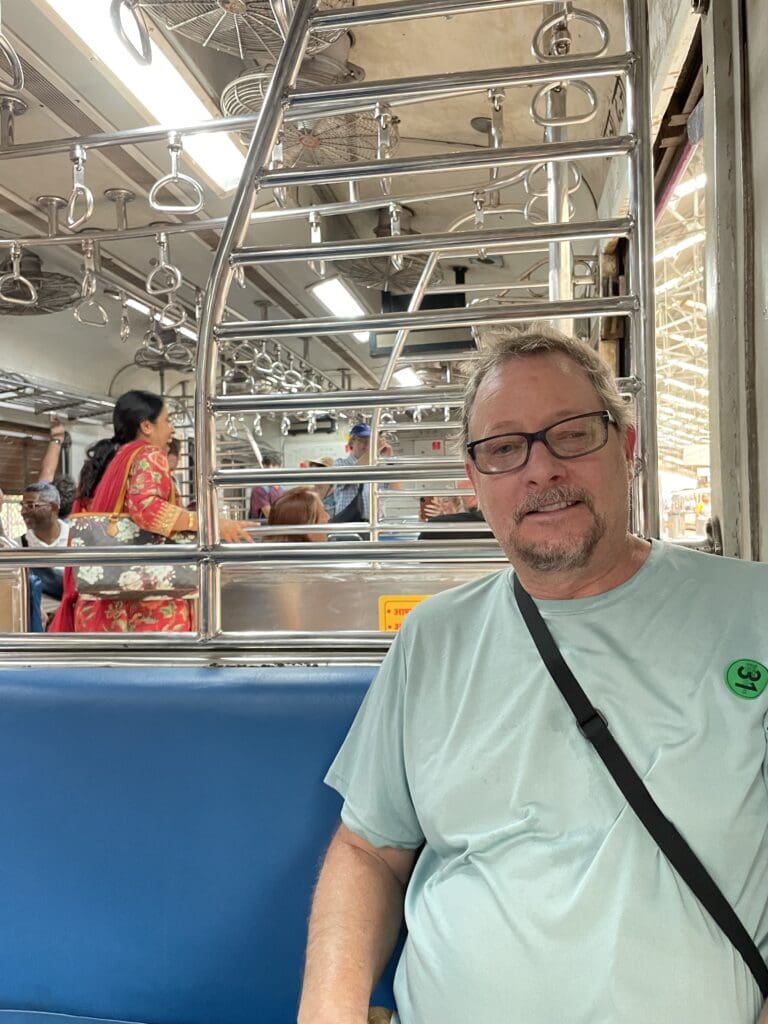
Mumbai is the home of Mahalakshmi Dhobi Ghat, the world’s largest open air laundromat. From the viewing platform along the sidewalks, you can see that the outdoor laundry facility stretches on for miles. It employees over 10,000 workers, all men! (What can you say. A man’s work is never done…)

These fellas live on sight at the multi-story outdoor facility, and wash uncountable loads of laundry each day. In addition to hospitals and hotels, they wash many companies uniforms, and individual family’s laundry (at the approximate cost of 8 pieces of laundry for $1.
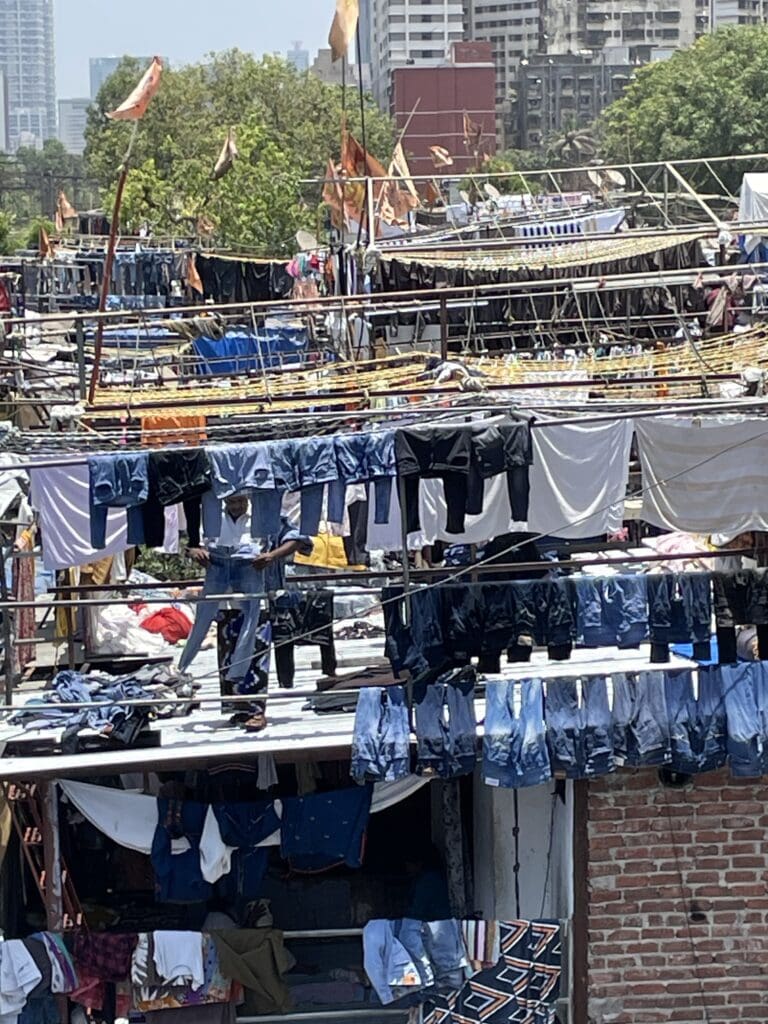
After several more stops to see touristy things, we returned to the ship.
The following morning, I had quite an excursion. This was really cool! Beginning at 5am, I enjoyed the “Waking Up With Mumbai” tour, and walked some of the streets at sunrise, visiting the local flower market, which was huge. Every morning, the farmers bring their fresh cut flowers to the market (which stretches on forever) to be sold to the local vendors, markets, restaurants, etc. (Flowers are an integral part of their culture.) The number of people and the hustle-bustle was overwhelming. Quite the “not to be missed” site for a visitor!
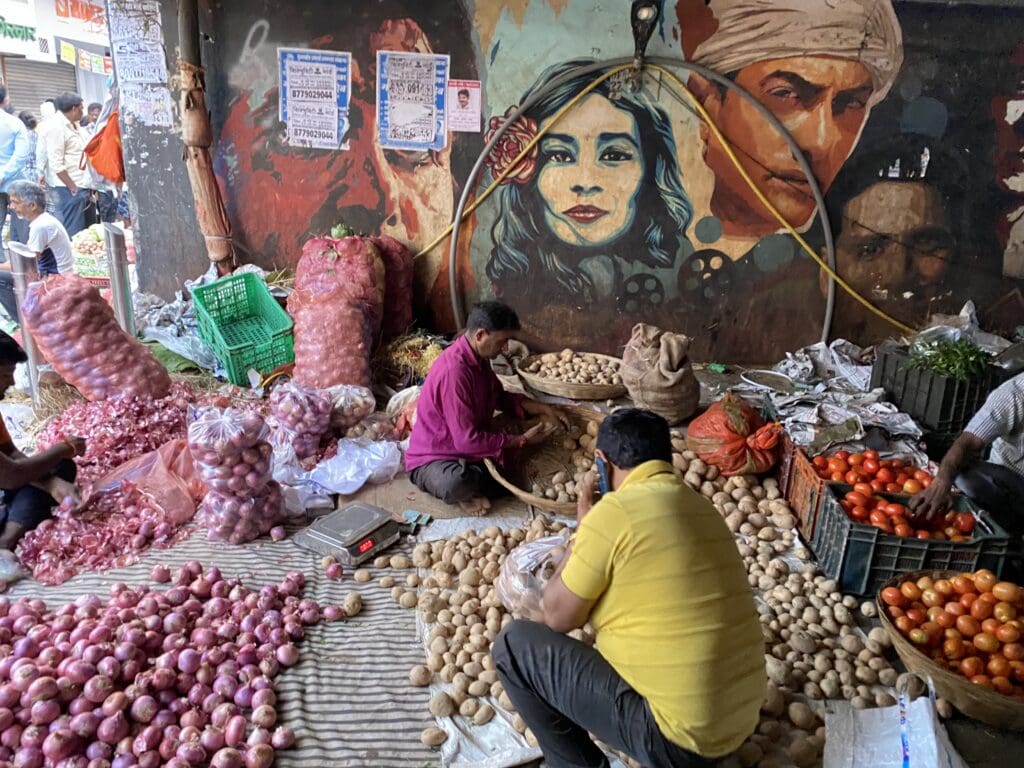
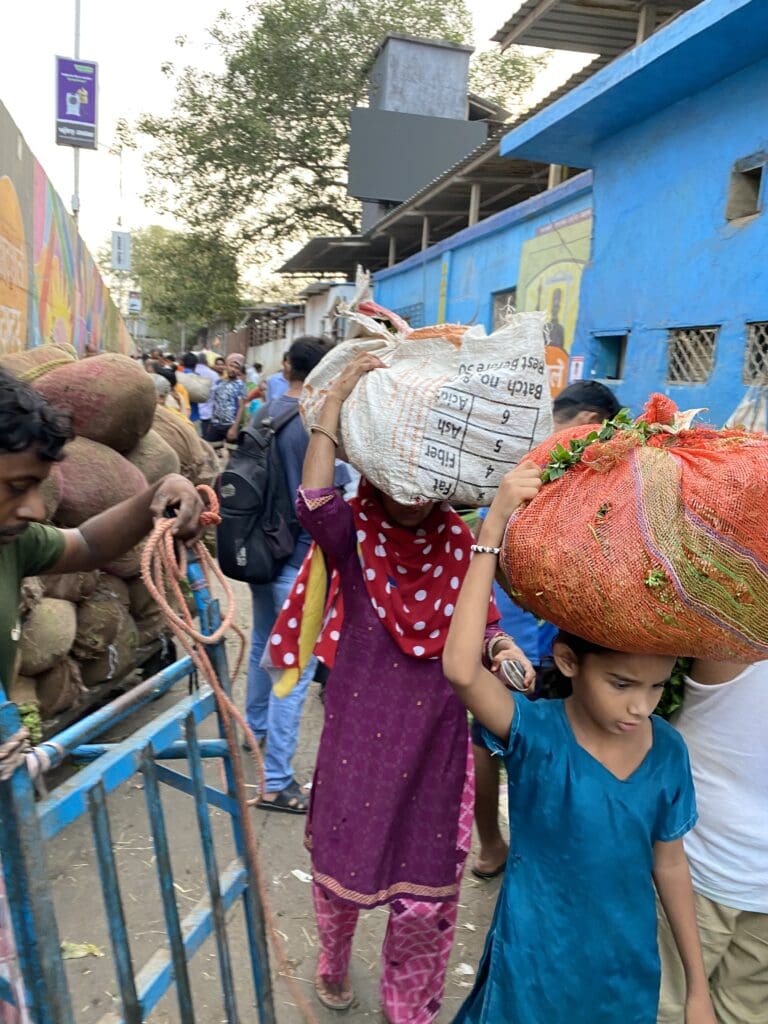
Next stop was back to the laundromat. Sure enough, some of the fellas were sleeping! Much better to visit early in the morning. (Cooler outside, and no other tourists.) After exploring several other neighborhoods and touristy places, we went to our last stop. The fish market on the pier.
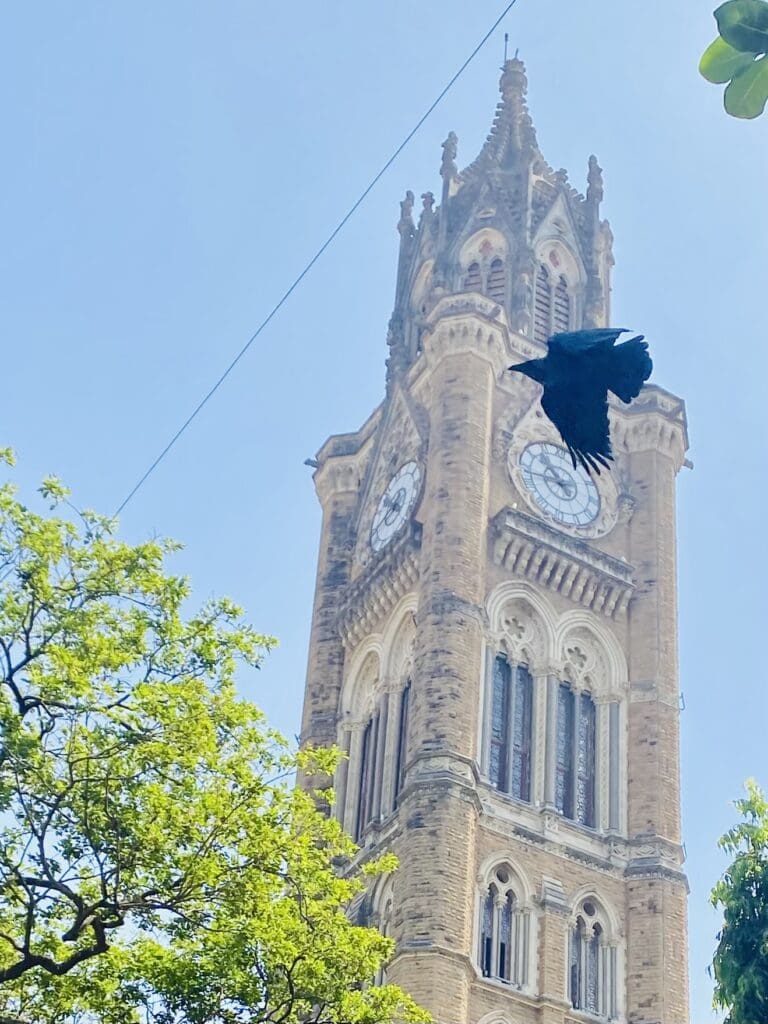
Wow, what a place. I no sooner stepped off of the bus, and the smell and sounds hit me. I knew immediately that I wanted to turn around and just wait on the bus, as I rushed a dozen steps to catch the guide and tell him I was staying, I realized he was on the move faster than I could catch him. As I turned around (thinking the bus driver could likely just call home and let him know I was with him on the bus, and not to look for me) there goes the bus, driving off without me.
As I turned and rushed to catch the rest of the group, I realized, this place was packed! And huge too!
As fast as the ships came in they were unpacked, and their fishy little (and big!) contents were sold. The volume of fish was unbeliveable. We were literally walking through this pier, with thousands of people, selling, and cleaning fish at a frantic pace. Entire families were asleep on the grubby wood plank floors in the sparse shaddy areas, corners, nooks and crannies. We were stepping between piles of octopi (dang, I always wanted to use that word in a sentence) and Marlon noses. Hopping past piles of giant flat fish with eyeballs as big as my fist staining up at us. There were piles of shrimp as tall as I am, with mothers and daughters that couldn’t have been older than 5 or 6 sitting on top of the piles, peeling the shrimp at a feverish pace.
People were yelling, and money was changing hands. Little old men were pushing 10’ long 2-wheeled carts loaded with crates of fish stacked higher than they were tall, winding between the crowds. Girls from carrying huge baskets of fish balanced on their heads back to their restaurants.
And right in the middle of all of these little people was a 20-person line of horrified white tourist, weaving in and out, trying to not step in fish guts in our Nikes and sandals. What a sight!
Only two things were going through my head as we left. Number one, dang I am glad Karen did not come with me on this excursion. And number two, I wish we would have gone to the laundry after the fish market instead of before…
Eventually we reached the end of the pier. As I filed away the memories of the last 20 minutes (in a convenient little corner of my mind, so as to ensure that is was easily recoverable when it was time for my brain to build my nightmares for the next several nights…) we headed back a ways before making a sharp turn up the first ally, and wallah! There is the bus.
On the long and smelly ride back to the ship, we exchange stories of the port. We were all in agreement, that many of the vendors went the extra mile to ensure that they gave us a good chase with their carts, and were able to maximize the amount of fish guts they sloshed on the dumb tourists as we made our way through the crowd. (I swear I saw several of them chuckling as they were doing this!) Just another day at the office for them I suppose.
(Unfortunately, the fish market is located near the India Naval base, and photography of the the market is strictly forbidden. So, sorry, no photos to share…)
Needless to say, I spend my last evening in India on the ship, doing laundry and eating red meat.
🙂
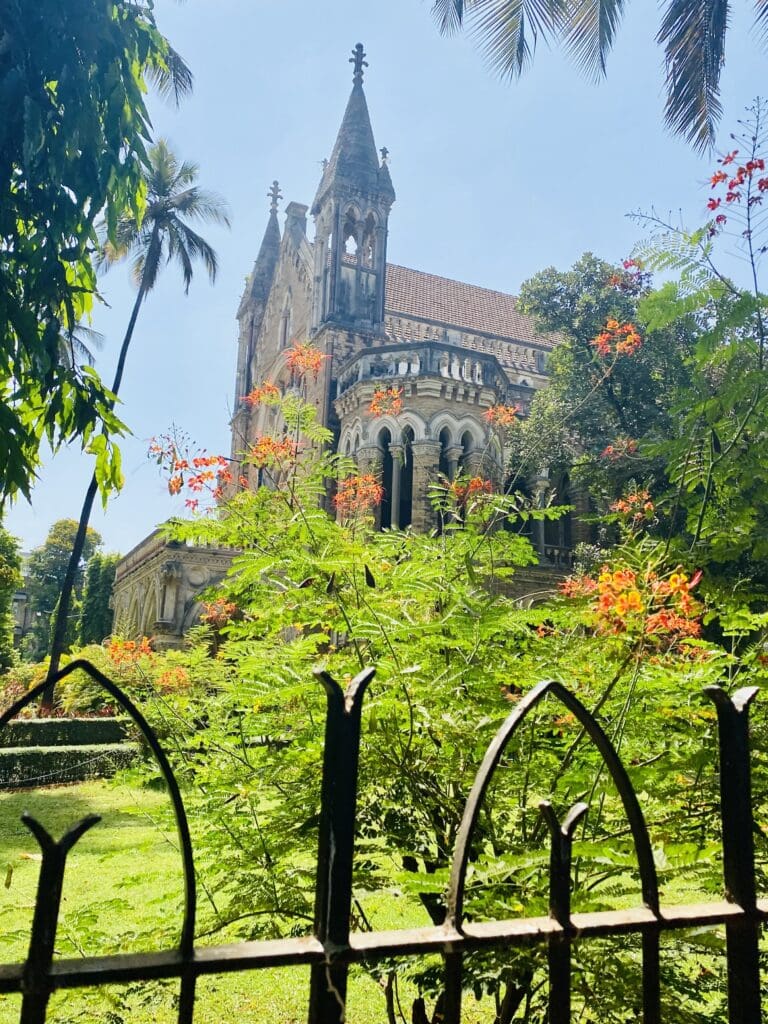
So all in all, India was a great place to visit. Super nice people, and I am great full that we had an opportunity to give many of them a few dollars to help them out.
Well, thank you for checking in. I’m not saying where we are going next, but I’ll give you a hint.
“The people in Dubai don’t like the Flintstones, but the people in Abu Dhabi do!”
🙂
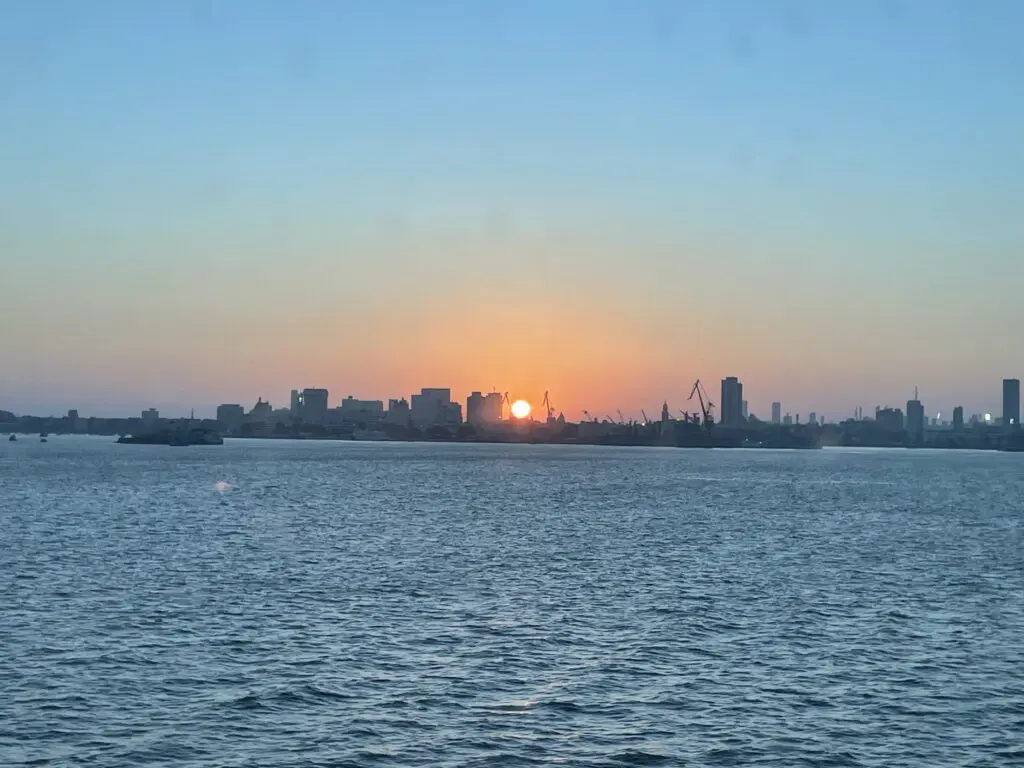
Thanks for visting.
– Mike
”It’s easy to stand in the crowd but it takes courage to stand alone.” – Mahatma Gandhi, An Autobiography: The Story of My Experiments with Truth

Recent Comments